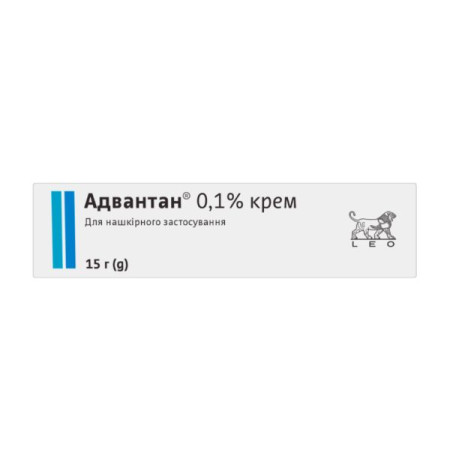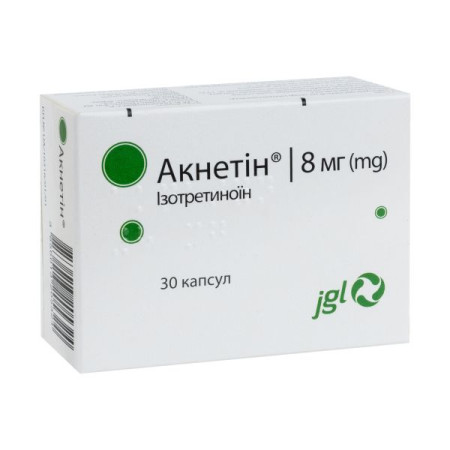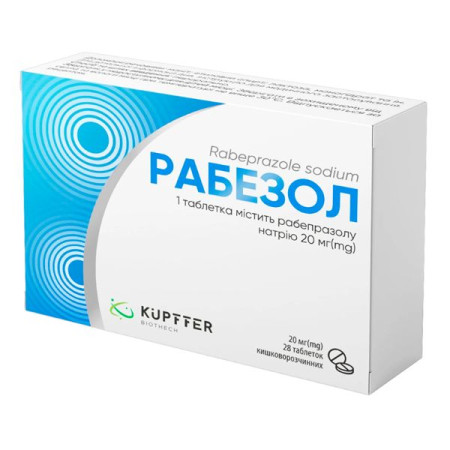Fluorocort ointment 1 mg/g tube 15 g

Instructions Fluorocort ointment 1 mg/g tube 15 g
Composition
active ingredient: triamcinolone;
1 g of ointment contains triamcinolone acetonide 1 mg;
Excipients: methyl parahydroxybenzoate (E 218), stearic acid, polysorbate 60, cetyl alcohol, liquid paraffin, glycerin (85%), purified water.
Dosage form
Ointment.
Main physicochemical properties: white or almost white homogeneous ointment, practically odorless.
Pharmacotherapeutic group
Corticosteroids for use in dermatology. Moderately active corticosteroids (group II). Triamcinolone. ATX code D07A B09.
Pharmacological properties
Pharmacodynamics.
The active ingredient of the ointment is triamcinolone acetonide, a glucocorticosteroid that contains fluorine and, when applied topically, exhibits anti-inflammatory, antiallergic, and antipruritic effects.
The pharmacological action of glucocorticosteroids is based on the regulation of the synthesis of specific proteins of the body and ensuring the body's adaptability to stressful situations by reducing glucose utilization and increasing gluconeogenesis (hyperglycemia). They contribute to the deposition of glycogen, primarily in the liver, by increasing insulin secretion in conditions of hyperglycemia. Reduce the synthesis and increase the catabolism of proteins of muscle, skin and bone tissues; promote lipolysis. Narrow blood vessels, reduce their permeability and swelling of tissues.
Numerous glucocorticosteroid receptors are also found in brain and heart tissues. Glucocorticosteroids enhance β-adrenergic responses in the lungs, dilate bronchioles, and reduce vascular resistance in the lungs.
In high doses, they inhibit the secretion of corticotropin, in case of adrenocorticosteroid insufficiency, they increase glomerular filtration and diuresis; they cause ulcerative lesions of the mucous membranes. In higher doses, they exhibit antiallergic and anti-inflammatory properties.
Esterification of the glucocorticosteroid molecule with fatty acids at positions 17 and 21 significantly enhances its effect on the skin. The location of the cyclic acetonide at positions 16 and 17 enhances the local anti-inflammatory effect without affecting the systemic effect of glucocorticosteroids. Fluorine contributes to a further increase in the local activity of the drug.
Pharmacokinetics.
Triamcinolone penetrates well into the deep layers of the skin, partially enters the bloodstream. When applying an occlusive dressing to the affected skin areas, it is absorbed in an amount sufficient to provide a systemic effect. Glucocorticosteroids are rapidly distributed in the tissues of the body. The main metabolite of triamcinolone is 6-β-hydroxytriamcinolone, which is excreted by the liver, kidneys, feces and urine in equal proportions. The half-life from blood plasma is about 5 hours, the half-life is 18-36 hours.
Indication
Skin diseases sensitive to corticosteroids (eczema, psoriasis vulgaris, allergic dermatitis).
Contraindication
Hypersensitivity to triamcinolone acetonide or to any of the excipients of the drug.
The drug should not be applied to the eyes or areas of skin near the eyes.
Do not use the drug as monotherapy without specific treatment for fungal and bacterial skin infections.
Tuberculosis; viral skin lesions, especially herpes simplex and chickenpox; parasitic skin infections (scabies); skin manifestations of syphilis; skin reactions after vaccination; perianal and genital itching; leg ulcers; varicose veins; widespread plaque psoriasis; facial skin lesions (rosacea, acne vulgaris, perioral dermatitis); diaper rash caused by wet diapers; dry peeling of the skin.
Do not apply the ointment to the breasts immediately before breastfeeding.
Do not use in children under 1 year of age.
Interaction with other medicinal products and other types of interactions
When topical steroids are used, interactions with other drugs are unknown.
Application features
If skin irritation occurs, you should stop using Ftorocort® ointment and continue treatment with another drug.
When using occlusive dressings and treating large body surfaces, systemic effects of the drug are possible - in such cases, special caution is required, especially in children.
During the application of the ointment, microorganisms present on the skin (primarily pyogenic microorganisms, sometimes budding yeast fungi) can penetrate through the loosened stratum corneum and cause various pyodermas, which are treated with rinse-off disinfectants. Fungal diseases are possible, sometimes bruises may rarely appear under the occlusive dressing. With prolonged use of the ointment on the same area of the body, especially in young patients, atrophy of this area of the skin may develop.
Some areas of the body, such as the armpits, inguinal folds (where there is natural occlusion and the skin is more delicate and thin) are more prone to the development of striae and easily noticeable atrophy of this area of skin, which is irreversible. Therefore, the application of the ointment on these areas of skin should be short-term.
In the event of the development of a fungal or bacterial skin infection, additional local or systemic therapy is necessary.
Prolonged use of the drug on the skin of the face is not recommended due to the risk of skin atrophy. Avoid contact with the eyes. In case of contact with the eyes, rinse them with plenty of running water and consult a doctor.
In the treatment of psoriasis, withdrawal syndrome, steroid dependence, development of generalized pustular psoriasis, and development of local or systemic toxicity due to impaired skin barrier function are possible. Treatment of patients with psoriasis with topical corticosteroids is possible only under strict medical supervision.
The ointment can be prescribed to children over 1 year of age only in exceptional cases. The duration of use of the drug in children should not exceed 5 days. The use of an occlusive dressing in children is contraindicated.
In the case of use in children, it is necessary to take into account the possibility of signs of suppression of the hypothalamic-pituitary-adrenal system and Cushing's syndrome, which occur in children more often than in adult patients due to a larger ratio of skin area to body weight and, accordingly, children are more susceptible to systemic toxicity. Acute adrenal insufficiency, Cushing's syndrome, and increased intracranial pressure have been observed in children receiving corticosteroids for topical use.
Vision impairment
Visual disturbances may occur with systemic and topical corticosteroids. If a patient presents with symptoms such as blurred vision or other visual disturbances, they should be referred to an ophthalmologist for evaluation of possible causes, which may include cataracts, glaucoma, or rare conditions such as central serous chorioretinopathy (CSCR), which have been reported with systemic and topical corticosteroids.
Topical steroid withdrawal syndrome
Prolonged continuous or inappropriate use of topical steroids may lead to recurrent flares after discontinuation of treatment (topical steroid withdrawal syndrome). Severe relapses may occur in the form of dermatitis with intense redness, stinging and burning, which may extend beyond the initial treatment area. Relapses are more likely when delicate skin areas such as the face and flexures are treated. If the disease recurs within a few days or weeks after successful treatment, a withdrawal reaction should be suspected. Re-administration should be undertaken with caution and specialist advice or other treatment options should be considered.
Excipients
This medicinal product contains methyl parahydroxybenzoate (E 218), which may cause allergic reactions (possibly delayed), and stearic acid, which may cause local skin reactions (e.g. contact dermatitis).
Use during pregnancy or breastfeeding
Pregnancy. The use of the ointment in the first trimester of pregnancy is contraindicated. There is insufficient data confirming the safety of the drug during pregnancy in the second and third trimesters. The question of the use of the drug during pregnancy in the second and third trimesters of pregnancy and during breastfeeding is decided by the doctor in each case individually, carefully weighing the ratio of the expected effect of treatment and the potential risk of the drug's effect on the fetus.
Breastfeeding period. Absorption of glucocorticosteroids into the circulatory system is accompanied by their penetration into breast milk and their effect on the adrenal cortex and growth of the infant.
Topical use of triamcinolone is not recommended during breastfeeding. Application of the cream to the mammary glands immediately before breastfeeding is contraindicated (see section "Contraindications").
Ability to influence reaction speed when driving vehicles or other mechanisms
There are no reports at this time. However, it is recommended to exercise extreme caution when driving or operating other machinery, given the possibility of developing adverse reactions from the nervous system.
Method of administration and doses
For external use.
Adults: apply a thin layer of ointment 2-3 times a day to the affected area of skin (maximum dose for adults - no more than 15 g of ointment per day) or apply the drug under an occlusive dressing (maximum dose for adults - no more than 10 g of ointment per day).
Children: from 1 year of age, apply a thin layer of ointment to the affected area of skin no more than 2 times a day. The duration of use of the drug in children should not exceed 5 days. The use of an occlusive dressing in children is contraindicated.
Elderly people should use the drug with caution and for a short time, as it should be borne in mind that the skin of this category of patients is thinner.
Children.
The ointment is contraindicated for children under 1 year of age.
Overdose
Depending on the amount of steroid that has entered the body, both local and systemic adverse reactions may develop. In case of overdose, treatment should not be abruptly discontinued - this should be done gradually, reducing the dose of the drug. If symptoms of adrenal insufficiency develop, intravenous administration of hydrocortisone may be required.
Side effects
Glucocorticosteroid drugs when used topically are characterized by local adverse reactions, however, depending on the amount of substance that enters the systemic bloodstream, systemic effects are possible.
With prolonged use on large surfaces, suppression of the function of the adrenal cortex is possible, especially in children, as well as when using occlusive dressings; negative nitrogen balance is possible due to increased protein breakdown.
Excipients with known effect: cetyl alcohol - may cause local skin reactions (e.g. contact dermatitis); methyl parahydroxybenzoate (E 218) - may cause allergic reactions (possibly delayed).
The frequency of the following adverse reactions is unknown as there are no relevant data available (cannot be estimated from the available data).
Infections and parasitic diseases: infection, masking of the course of infections, opportunistic infections.
Immune system disorders: hypersensitivity.
Endocrine disorders: suppression of adrenal cortex function (secondary adrenal insufficiency).
Metabolic and nutritional disorders: hypokalemic alkalosis, water and sodium retention, hypokalemia.
Mental disorders: insomnia, mental disorders.
Nervous system disorders: convulsions, dizziness, headache, increased intracranial pressure.
Eye disorders: cataract, subcapsular cataract, exophthalmos, glaucoma, optic nerve head swelling, ulcerative keratitis, chorioretinopathy, blurred vision (see section "Special warnings and precautions for use")
Cardiac disorders: heart failure.
Vascular disorders: arterial hypertension.
Gastrointestinal disorders: gastric bleeding, gastrointestinal bleeding, gastrointestinal perforation, esophagitis, pancreatitis, peptic ulcer.
Skin and subcutaneous tissue disorders: dermatitis, burning sensation of the skin, folliculitis, acneiform eruptions, contact dermatitis, dryness and thinning of the skin, erythema, hirsutism, increased sweating, diaper rash, itching, skin atrophy, hypopigmentation, irritation, striae, telangiectasia. Withdrawal reactions: skin redness, which may spread beyond the initial affected area, burning or tingling sensation, itching, peeling of the skin, oozing pustules (see section "Special instructions").
Musculoskeletal and connective tissue disorders: steroid myopathy, osteoporosis, osteonecrosis, aseptic necrosis.
General disorders and administration site conditions: delayed wound healing.
Investigations: increased intraocular pressure, negative nitrogen balance, negative skin tests.
Children
Eye disorders: The likelihood of developing cataracts is higher in children.
Musculoskeletal and connective tissue disorders: growth retardation.
Reporting of suspected adverse reactions
Reporting adverse reactions after registration of a medicinal product is important. This allows monitoring of the benefit/risk ratio when using this medicinal product. Medical and pharmaceutical professionals, as well as patients or their legal representatives, should report all cases of suspected adverse reactions and lack of efficacy of a medicinal product via the Automated Information System for Pharmacovigilance at the link: https://aisf.dec.gov.ua.
Expiration date
2 years.
Storage conditions
Store at a temperature not exceeding 25 °C in the original packaging.
Keep the drug out of the reach of children.
Packaging
15 g of ointment in a closed aluminum tube with a polyethylene cap with a perforated tip. 1 tube in a cardboard box.
Vacation category
According to the recipe.
Producer
JSC "Gedeon Richter".
Location of the manufacturer and address of its place of business
H-1103, Budapest, Demrei Street 19-21, Hungary.
There are no reviews for this product.
There are no reviews for this product, be the first to leave your review.
No questions about this product, be the first and ask your question.










